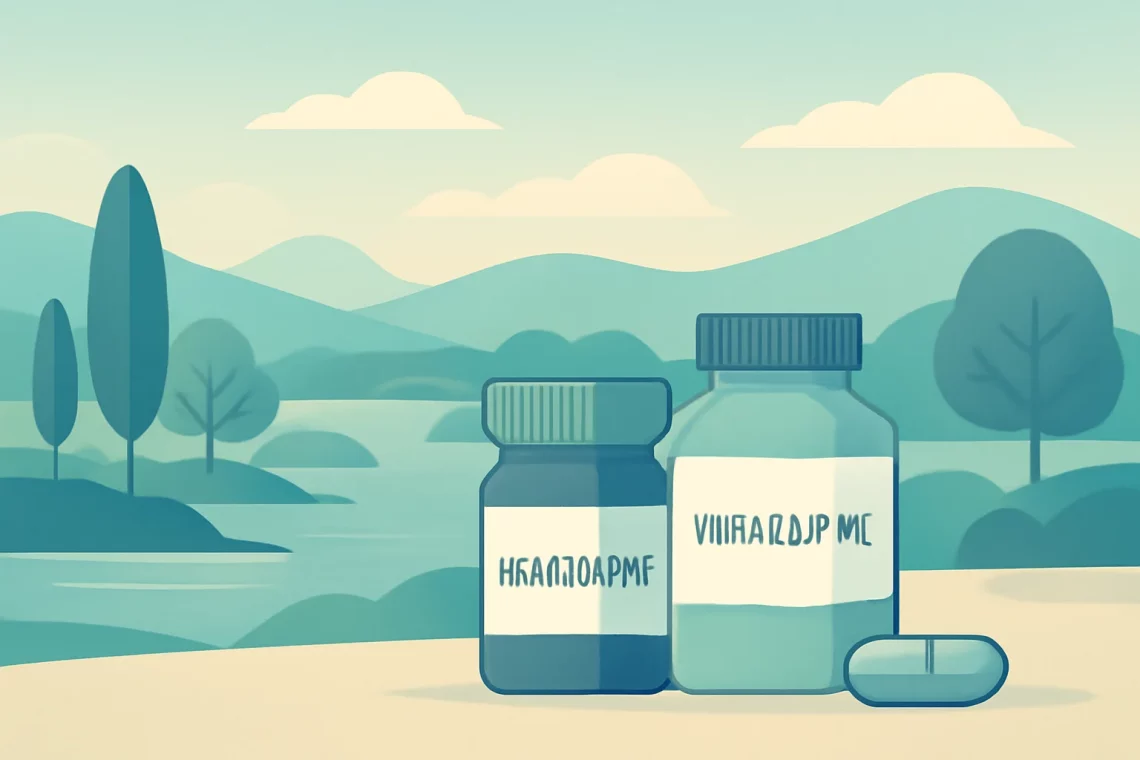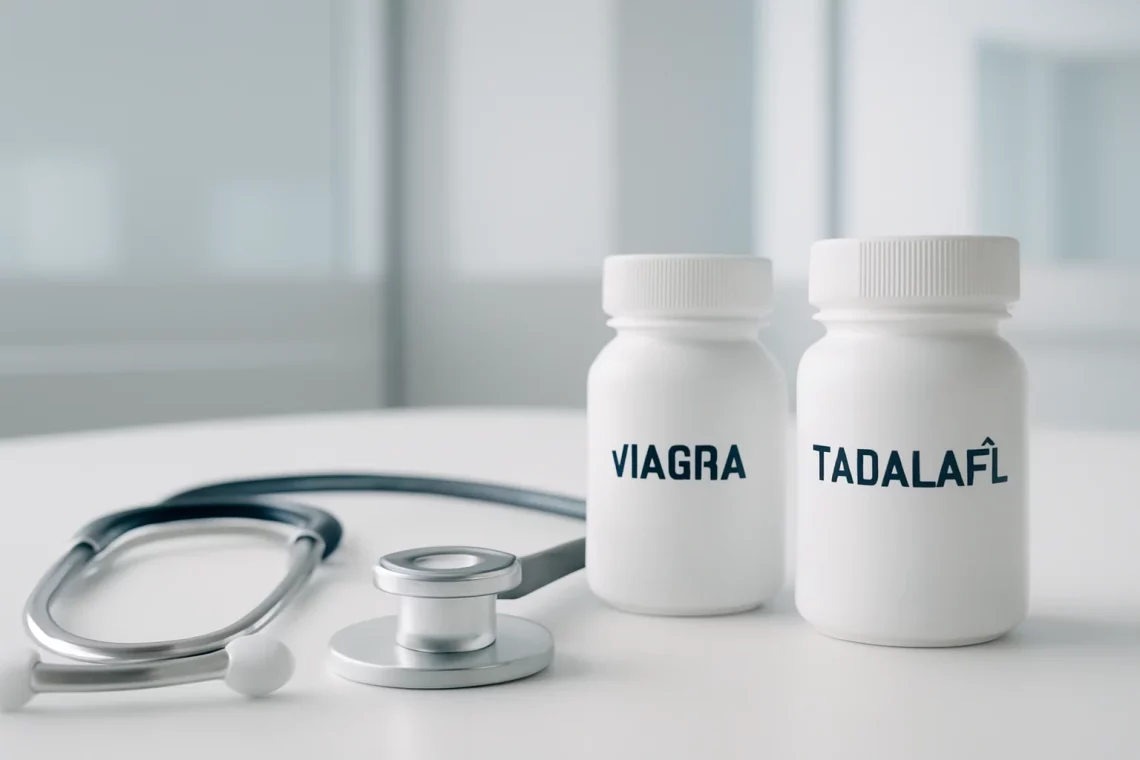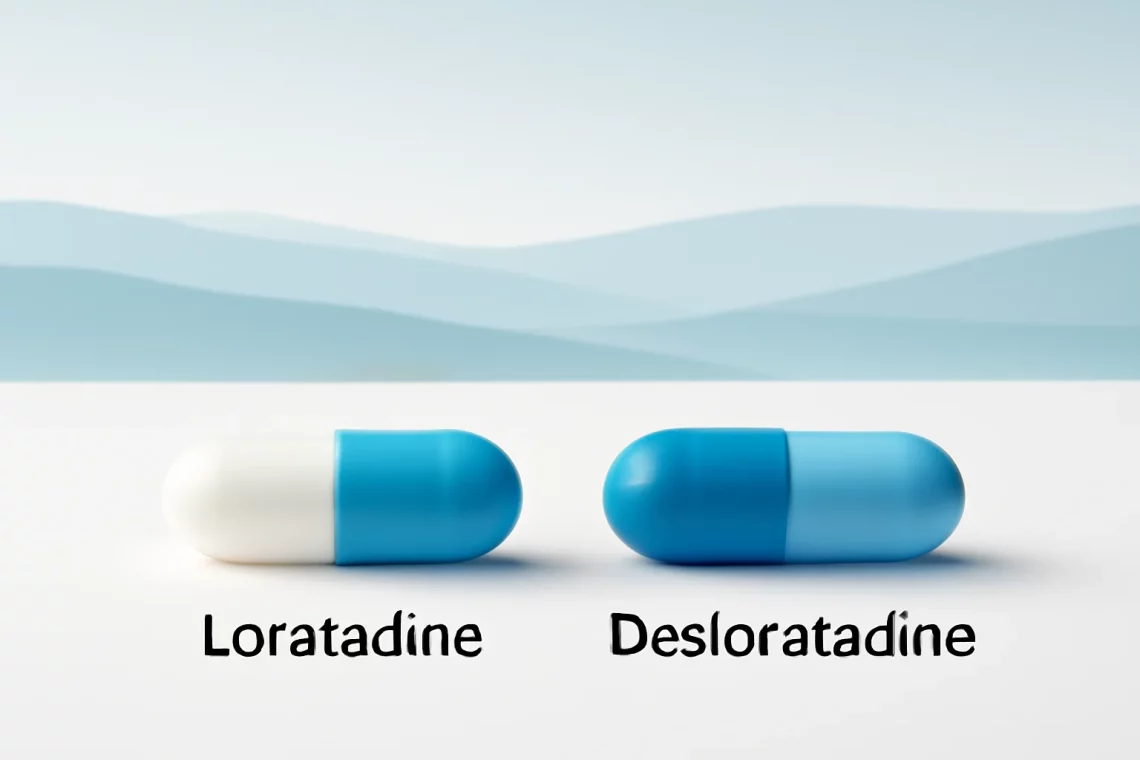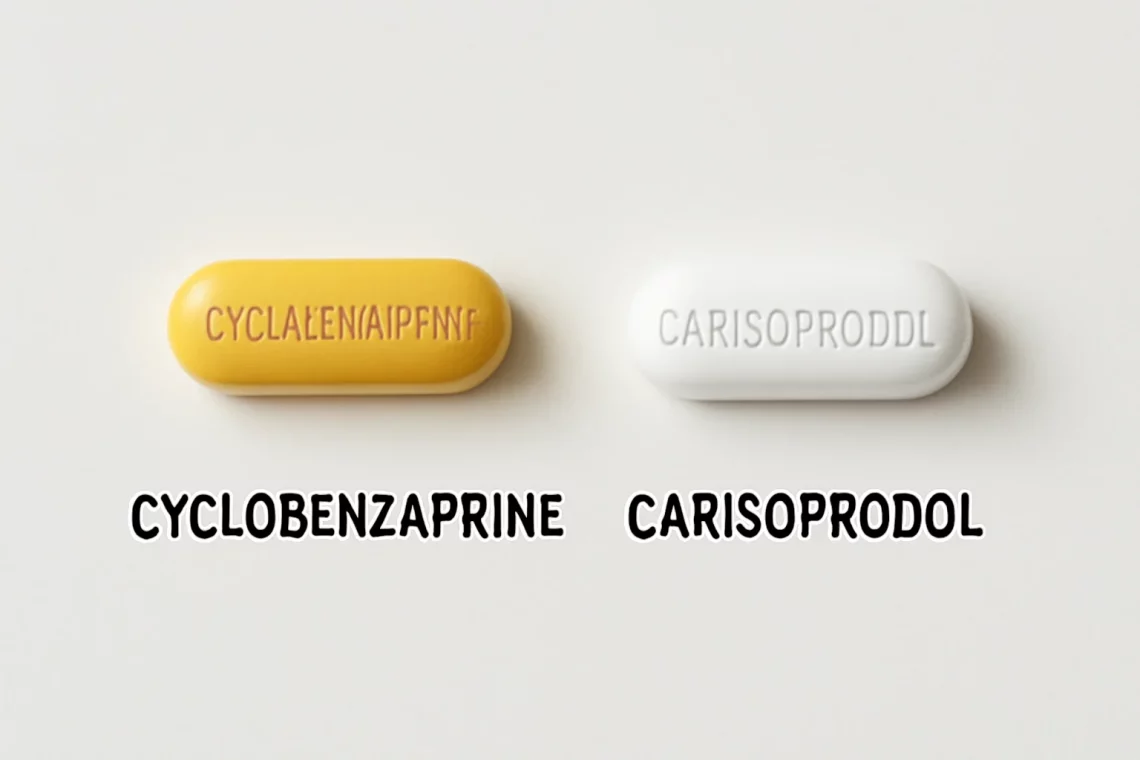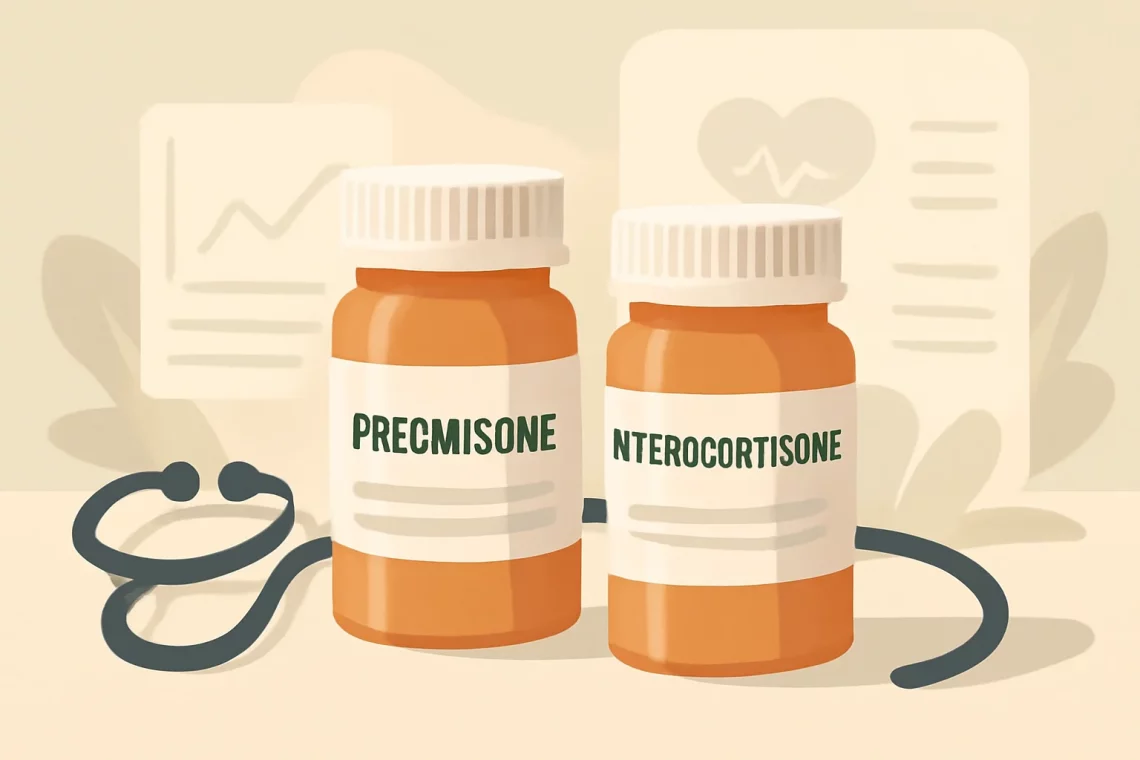-
Trazodone or Mirtazapine: Which Antidepressant is Right for You?
Trazodone and mirtazapine are two medications commonly prescribed for the treatment of depression and anxiety disorders. As mental health awareness has grown, so has the need for effective treatments. These medications belong to different classes of antidepressants and have unique mechanisms of action, side effects, and therapeutic uses. Understanding the differences and similarities between trazodone and mirtazapine can help individuals make informed decisions about their treatment options. Both medications are generally well-tolerated, but their efficacy can vary from person to person. Some patients may respond better to one medication than the other, and factors such as individual health history, other medications being taken, and potential interactions can influence this choice.…
-
Trazodone vs Mirtazapine: Which Antidepressant Is Right for You?
Trazodone and Mirtazapine are two medications commonly prescribed for the treatment of various mental health conditions, primarily depression and anxiety. Both of these medications have gained recognition for their effectiveness, yet they operate through distinct mechanisms in the brain and have different profiles of side effects. Understanding the nuances of each medication can be crucial for patients and healthcare providers alike when making informed treatment choices. Trazodone is classified as a serotonin antagonist and reuptake inhibitor (SARI), while Mirtazapine falls under the category of noradrenergic and specific serotonergic antidepressants (NaSSAs). Their differing modes of action influence not only their efficacy but also the types of side effects and interactions they…
-
Viagra vs Tadalafil: Which ED Treatment is Right for You?
Erectile dysfunction (ED) is a common condition that affects millions of men worldwide. It can significantly impact relationships and self-esteem, leading many to seek effective solutions. Among the various treatments available, two of the most well-known medications are Viagra and Tadalafil. Both are designed to help men achieve and maintain an erection by increasing blood flow to the penis, but they are not identical. Understanding the differences between these two medications is crucial for anyone considering treatment for ED. Factors such as onset time, duration of effects, side effects, and potential interactions with other medications can influence a man’s choice. With a plethora of information available, it can be overwhelming…
-
Azithromycin vs Erythromycin: Key Differences and Uses Explained
Azithromycin and erythromycin are two widely used antibiotics that belong to the macrolide class of medications. They are both effective in treating various bacterial infections by inhibiting bacterial protein synthesis, which ultimately leads to the death of the bacteria. Both drugs are commonly prescribed for respiratory tract infections, skin infections, and certain sexually transmitted infections, among others. Despite their similarities, there are significant differences between the two that can influence a physician’s choice of treatment. In clinical practice, understanding these differences is essential for selecting the appropriate antibiotic that will effectively target the infection while minimizing potential side effects. Factors such as bacterial resistance, patient tolerance, and specific infection types…
-
Cyclobenzaprine vs Chlorzoxazone: Key Differences and Uses Explained
Cyclobenzaprine and chlorzoxazone are both medications commonly used to treat muscle spasms and discomfort. Although they serve similar purposes, these two drugs possess distinct properties, mechanisms of action, and side effects profiles. Understanding the nuances between cyclobenzaprine and chlorzoxazone can empower patients and healthcare providers to make informed decisions regarding treatment options. Muscle spasms can arise from various conditions, including injuries, overuse, or underlying medical issues. The sensation of tightness, pain, or restricted movement can significantly impact daily life, leading individuals to seek relief through medication. While both cyclobenzaprine and chlorzoxazone are classified as muscle relaxants, they differ in their chemical structure and how they interact with the nervous system.…
-
Loratadine vs Desloratadine: Key Differences Explained
Loratadine and desloratadine are antihistamines widely used for the treatment of allergic conditions. Both of these medications help alleviate symptoms associated with allergies, such as sneezing, runny nose, and itchy eyes. They belong to a class of drugs known as second-generation antihistamines, which are known for causing less sedation compared to first-generation antihistamines. This distinction makes them more appealing to individuals who need to manage allergy symptoms without the drowsiness that often accompanies other allergy medications. Understanding the differences and similarities between loratadine and desloratadine is crucial for those seeking effective allergy relief. While they share a common purpose, the way they act in the body and their specific applications…
-
Cyclobenzaprine vs Carisoprodol: Which Muscle Relaxant is Better?
Cyclobenzaprine and Carisoprodol are two medications commonly prescribed for the treatment of muscle spasms and discomfort associated with musculoskeletal conditions. Both belong to a class of drugs known as muscle relaxants, which work by affecting the central nervous system to alleviate pain and improve mobility. While they share some similarities in their therapeutic use, they also have distinct differences in terms of mechanism of action, side effects, and duration of use. In an era where muscle-related issues are increasingly prevalent due to sedentary lifestyles and physical stressors, understanding these medications can empower patients and healthcare providers alike. Muscle relaxants like cyclobenzaprine and carisoprodol have become important components in managing pain…
-
Lexapro vs Remeron: A Comprehensive Comparison of Antidepressants
The choice between medications for mental health can be daunting, especially when it comes to antidepressants. Two commonly prescribed options are Lexapro and Remeron. Both of these medications have distinct mechanisms of action, benefits, and side effects, making them suitable for different types of patients and conditions. Understanding the nuances of these drugs is essential not only for patients but also for healthcare providers who aim to offer personalized treatment plans. Antidepressants like Lexapro (escitalopram) and Remeron (mirtazapine) are often used to treat major depressive disorder and anxiety disorders. Each medication interacts with the brain’s neurotransmitters in different ways, influencing mood, sleep, and appetite. As mental health awareness increases, the…
-
Prednisone vs Hydrocortisone: Key Differences and Uses Explained
Prednisone and hydrocortisone are two corticosteroids that are commonly used in the medical field for their anti-inflammatory and immunosuppressive properties. These medications have been pivotal in treating a variety of conditions, including autoimmune diseases, allergies, and certain cancers. Despite their similarities, there are significant differences between the two that can influence a healthcare provider’s choice in prescribing one over the other. Corticosteroids, like prednisone and hydrocortisone, are synthetic drugs that mimic the effects of hormones produced by the adrenal glands. They play a crucial role in managing the body’s response to stress and inflammation. Understanding the nuances of these medications is essential for both healthcare professionals and patients alike, as…
-
Cephalexin vs Bactrim: Choosing the Right Antibiotic for You
Cephalexin and Bactrim are two commonly prescribed antibiotics that serve different purposes in the treatment of bacterial infections. Understanding the distinctions between these medications is crucial for both patients and healthcare providers to ensure the appropriate choice is made for each individual case. Antibiotics play a vital role in modern medicine, helping to combat infections that can lead to serious health complications. However, the growing concern over antibiotic resistance has emphasized the need for careful selection and judicious use of these medications. Cephalexin, a first-generation cephalosporin antibiotic, is effective against a range of gram-positive bacteria. It works by inhibiting cell wall synthesis, ultimately leading to bacterial cell death. On the…
